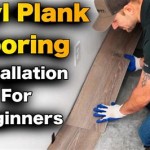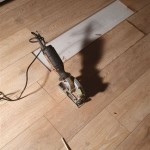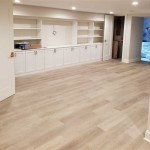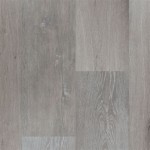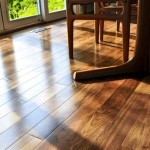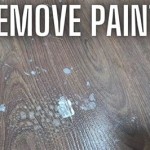How Much Is Hardwood Floor Installation Cost?
Determining the cost of hardwood floor installation involves a multifaceted assessment, considering factors ranging from the type of wood selected to the intricacies of the subfloor preparation. Understanding these variables is crucial for budgeting and ensuring a successful project. This article provides a comprehensive overview of the elements influencing hardwood floor installation costs.
The estimation of hardwood floor installation costs necessitates a detailed examination of several components. These costs generally encompass material expenses, labor charges, and potentially additional fees associated with removing existing flooring, preparing the subfloor, and applying finishing touches. A thorough understanding of each element allows for a more accurate and informed budgeting process.
Material Costs: The Foundation of the Expense
The choice of hardwood flooring significantly impacts the overall material cost. Hardwood options range from readily available and affordable selections to rare and exotic varieties, with prices varying accordingly. Factors such as wood species, grade, cut, and finish all contribute to the final price per square foot.
Solid Hardwood: Solid hardwood flooring consists of planks crafted from a single piece of wood. This type offers durability and the potential for refinishing multiple times throughout its lifespan. Common species include oak, maple, and cherry. Oak, known for its resilience and versatility, often presents a more budget-friendly option compared to cherry, which exhibits a richer hue and typically commands a higher price. The grade of the wood, indicating the presence of knots and variations in color, also influences the cost. Higher grades, characterized by fewer imperfections, tend to be more expensive.
Engineered Hardwood: Engineered hardwood comprises multiple layers, with a thin veneer of hardwood affixed to a core of plywood or high-density fiberboard. Engineered hardwood offers enhanced stability, making it less susceptible to expansion and contraction due to changes in humidity. This type of flooring is generally more affordable than solid hardwood and can be installed in areas where solid hardwood is not recommended, such as basements. The thickness of the veneer and the quality of the core materials influence the price of engineered hardwood.
Exotic Hardwoods: Options such as Brazilian cherry, tigerwood, and Ipe offer unique aesthetics and increased hardness. Exotic hardwoods typically come with a higher price tag due to their scarcity, import costs, and distinctive characteristics. The rarity and unique grain patterns contribute to the elevated cost of these flooring choices.
Beyond the wood itself, essential materials like underlayment, adhesives, nails or staples, and finishing products contribute to the material cost. Underlayment provides a moisture barrier and sound insulation, while adhesives and fasteners secure the flooring to the subfloor. Finishing products, such as stain and sealant, protect the wood and enhance its appearance. The quality and type of these materials can influence the long-term performance and durability of the hardwood floor.
Accurately calculating the material cost requires measuring the square footage of the area to be covered and adding an allowance for waste. Waste factors typically range from 5% to 10%, accounting for cuts, miscalculations, and unusable pieces. Obtain quotes from multiple suppliers to compare pricing and ensure the best possible value for the selected materials.
Labor Costs: Expertise and Time Investment
Labor costs represent a significant portion of the total hardwood floor installation expense. Installation involves a series of meticulous steps, demanding specialized skills and experience. Labor costs typically encompass the removal of existing flooring, subfloor preparation, hardwood floor installation, and the application of finishing touches. The complexity of the installation and the local labor market influence the total labor cost.
Removal of Existing Flooring: The removal of existing flooring, such as carpet, tile, or vinyl, is often a necessary preliminary step. The cost of removal varies depending on the type of flooring and the difficulty of the process. Removing carpet is generally less expensive than removing tile, which may require specialized tools and techniques. Disposal of the removed flooring may also incur additional charges.
Subfloor Preparation: Preparing the subfloor is crucial for ensuring a level and stable surface for the hardwood flooring. This may involve leveling uneven areas, repairing damage, or installing a new subfloor altogether. Addressing subfloor issues is essential for preventing problems such as squeaking, buckling, or uneven wear. The extent of subfloor preparation directly affects the labor cost, with more extensive repairs demanding more time and resources.
Hardwood Floor Installation: The installation method also influences the labor cost. Solid hardwood is typically nailed or stapled to the subfloor, while engineered hardwood can be nailed, stapled, glued, or floated. The complexity of the installation pattern, such as herringbone or chevron, can also increase the labor cost due to the increased precision and time required. Experienced installers can efficiently and accurately install hardwood flooring, minimizing installation time and ensuring a professional finish.
Finishing Touches: Applying finishing touches, such as installing baseboards, quarter round molding, and thresholds, completes the installation process. These elements conceal gaps between the flooring and walls, providing a polished and professional appearance. The cost of these finishing touches depends on the materials selected and the complexity of the installation. Custom moldings or intricate designs may increase the labor cost associated with these finishing touches.
Labor costs can vary significantly depending on the region, the experience of the installer, and the complexity of the project. Obtaining quotes from multiple contractors is essential for comparing pricing and ensuring that the proposed labor costs are reasonable and competitive. Reputable contractors should provide detailed estimates outlining the scope of work and the associated labor charges.
Additional Considerations: Hidden Costs and Unexpected Expenses
Beyond material and labor costs, several additional factors can influence the overall expense of hardwood floor installation. These considerations may include the removal and disposal of old flooring, the need for specialized tools or equipment, the presence of asbestos or other hazardous materials, and the potential for unexpected repairs or modifications. Planning for these additional considerations can help prevent budget overruns and ensure a smooth installation process.
Removal and Disposal of Old Flooring: The cost of removing and disposing of old flooring can vary widely depending on the type of material and the local disposal fees. In some cases, old flooring may contain asbestos or other hazardous materials, requiring specialized removal and disposal procedures. Hiring a professional abatement company to handle hazardous materials can significantly increase the cost of the project.
Specialized Tools and Equipment: Certain types of hardwood flooring installations may require specialized tools and equipment, such as moisture meters, leveling compounds, or specialized saws. The cost of renting or purchasing these tools can add to the overall expense of the project. Experienced installers typically have access to the necessary tools and equipment, which may be included in their labor costs.
Unexpected Repairs or Modifications: During the installation process, unexpected issues may arise, such as hidden damage to the subfloor or the need for modifications to accommodate plumbing or electrical fixtures. Addressing these issues can increase the overall cost of the project, particularly if it requires additional materials or labor. Contingency planning is essential for addressing unexpected expenses and ensuring that the project remains within budget.
Moving Furniture and Appliances: The cost of moving furniture and appliances out of the installation area can also influence the overall expense of the project. Moving heavy or bulky items may require hiring a professional moving company, which can add to the overall cost. Discussing this aspect with the installer to determine their policy regarding furniture and appliance movement is advisable.
Obtaining detailed quotes from multiple contractors and thoroughly assessing the project site can help identify potential additional costs and prevent unexpected expenses. A comprehensive understanding of all factors influencing the cost of hardwood floor installation allows for accurate budgeting and informed decision-making.
The square footage of the installation area is a primary driver of cost. Larger areas naturally require more materials and labor, increasing the overall expense. Detailed measurements are crucial for accurate material estimations and avoiding costly shortfalls or excessive waste.
The complexity of the installation also significantly impacts the price. Intricate patterns, such as herringbone or chevron, demand more skill and time, resulting in higher labor costs. Straightforward installations are generally less expensive.
Geographic location plays a role in installation costs. Labor rates and material prices can vary significantly between regions. Urban areas often have higher labor costs than rural areas. Researching local market rates is advisable for accurate budgeting.
Seasonality can influence installation pricing. Demand for flooring services tends to peak during certain times of the year, potentially leading to higher prices. Scheduling the installation during off-peak seasons can sometimes yield cost savings.
Payment terms should be discussed and agreed upon upfront. Understanding the payment schedule and any associated fees is essential for avoiding misunderstandings. Reputable contractors typically require a deposit and subsequent payments upon completion of specific milestones.
The availability of materials can also affect pricing. Scarcity of certain wood species or finishes can drive up material costs. Considering readily available options can help control expenses.
Accessibility to the installation area can impact labor costs. Difficult access, such as narrow staircases or remote locations, may require additional time and effort, increasing labor charges. Discussing accessibility challenges with the contractor is crucial for accurate estimation.
Homeowners should consider the long-term value and maintenance costs of different hardwood options. While some materials may have a higher initial cost, their durability and longevity can provide better value over time. Understanding the maintenance requirements of different wood species is also important for budgeting purposes.
Permits may be required for certain hardwood floor installations, particularly in multi-unit dwellings or historic buildings. Obtaining the necessary permits can add to the overall cost and timeline of the project. Researching local building codes and permit requirements is advisable before commencing the installation.
Insurance coverage is an important consideration. Ensuring that the contractor has adequate insurance protects homeowners from liability in case of accidents or property damage. Verifying the contractor's insurance coverage before hiring them is crucial for risk mitigation.

Hardwood Flooring Cost 2024 Per Square Foot Mk

How Much Does Hardwood Flooring Cost 2025

Hardwood Flooring Installation Costs 2024

How Much Does Hardwood Flooring Cost 2025

The Cost Of Installing Hardwood Floors A Guide For Homeowners Architects Diary

How Much Does Hardwood Flooring Cost 2025

Flooring Installation Cost Guide 2025 Average S By Type

Cost To Install Hardwood Flooring Floor Fixr

Cost Of Installing Hardwood Floors Top 2024 Guide

Average Flooring Cost For Hardwood Installation Cmo
See Also
